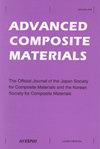采用抛物线裂纹张开假设的复合材料层合板横向裂纹三维解析模型
IF 2.3
3区 材料科学
Q3 MATERIALS SCIENCE, COMPOSITES
引用次数: 0
摘要
本文章由计算机程序翻译,如有差异,请以英文原文为准。
Three-dimensional analytical model for composite laminate with transverse cracks by assuming parabolic crack opening
In this study, a model for the three-dimensional effective compliance of composite laminates with transverse cracks is developed based on continuum damage mechanics. Three-dimensional laminate theory is used to reproduce all the thermoelastic properties of the damaged laminate. The damage variable, which describes the degree of stiffness reduction caused by transverse cracking, is formulated based on a three-dimensional micromechanical model, with a loose boundary condition and assuming parabolic crack opening. These assumptions contribute to the analytical accuracy of the stiffness reduction model, while simplifying the damage variable expression. The effective thermomechanical properties of various composite laminates are predicted using the proposed model and compared with finite element analysis (FEA) and experimental results. We found that the proposed model with derived damage variable successfully reproduces the FEA and experimental results of stiffness degradation of damaged composite laminates.
求助全文
通过发布文献求助,成功后即可免费获取论文全文。
去求助
来源期刊

Advanced Composite Materials
工程技术-材料科学:复合
CiteScore
5.00
自引率
20.70%
发文量
54
审稿时长
3 months
期刊介绍:
"Advanced Composite Materials (ACM), a bi-monthly publication of the Japan Society for Composite Materials and the Korean Society for Composite Materials, provides an international forum for researchers, manufacturers and designers who are working in the field of composite materials and their structures. Issues contain articles on all aspects of current scientific and technological progress in this interdisciplinary field. The topics of interest are physical, chemical, mechanical and other properties of advanced composites as well as their constituent materials; experimental and theoretical studies relating microscopic to macroscopic behavior; testing and evaluation with emphasis on environmental effects and reliability; novel techniques of fabricating various types of composites and of forming structural components utilizing these materials; design and analysis for specific applications.
Advanced Composite Materials publishes refereed original research papers, review papers, technical papers and short notes as well as some translated papers originally published in the Journal of the Japan Society for Composite Materials. Issues also contain news items such as information on new materials and their processing."
 求助内容:
求助内容: 应助结果提醒方式:
应助结果提醒方式:


